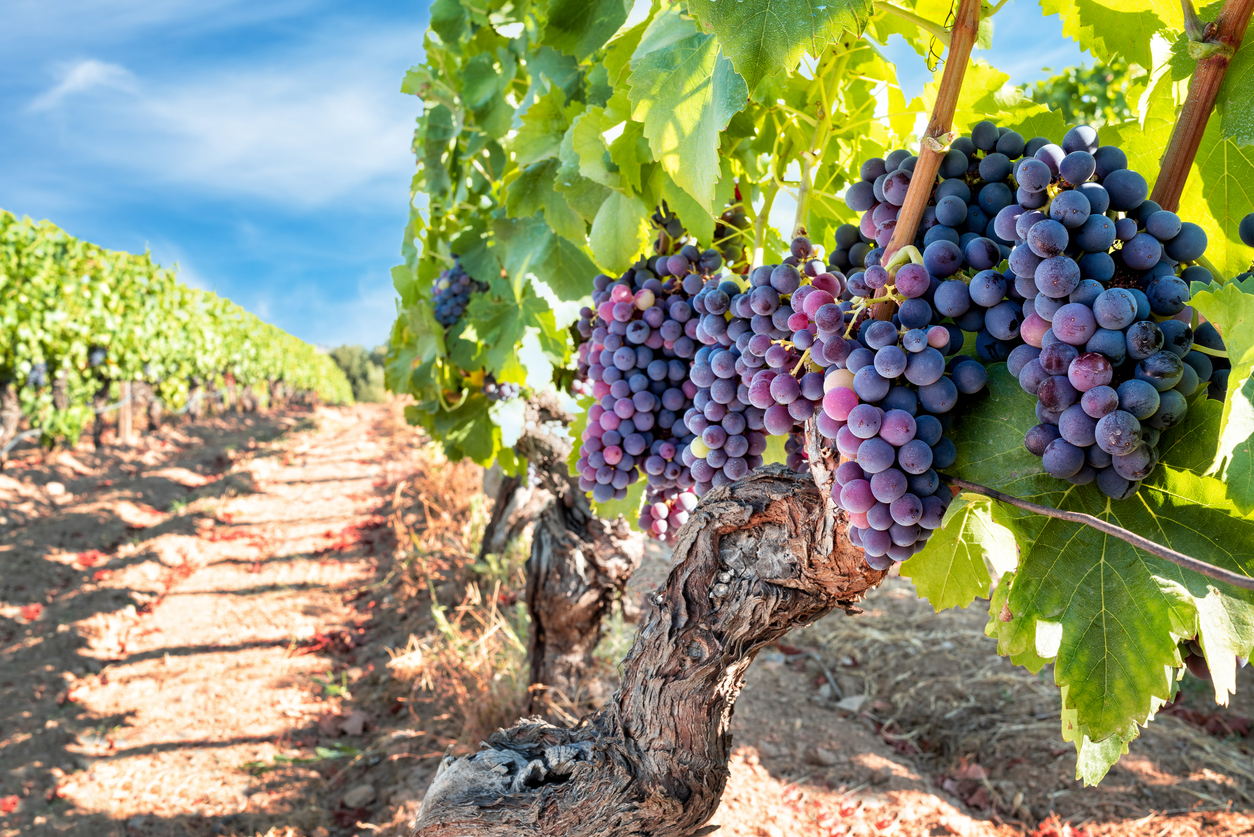
Vineyard with bunches of grapes
Anaerobic Respiration - Wine Fermentation
Grade 9-12
This lesson focuses on two main ideas:
- The biological process yeast undergoes in order for winemakers to produce wine.
- The differences between aerobic and anaerobic respiration.
Procedure
INTRODUCTION (15 minutes)
Read the introduction to students and review new vocabulary. Students will watch the "Maryland Farm and Harvest - Episode 1008 - Anaerobic Respiration - Wine Fermentation ” video. After the video, discuss the essential questions and thinking questions aligned to the topic and video. Discuss with students the career connections related to wine production and fermentation.
EXTENSION (15-30 minutes)
Complete extension activities with students, as you deem appropriate.
ASSESSMENT (15 minutes)
Have students apply their newfound knowledge by completing a Summative CER on the lesson using evidence from the video and activities as support.
REFLECTION (10 minutes)
Have students complete a reflection.
Standards
HS-LS2-3 Ecosystems: Interactions, Energy, and Dynamics
Construct and revise an explanation based on evidence for the cycling of matter and flow of energy in aerobic and anaerobic conditions.
- Science and Engineering Practices
Constructing Explanations and Designing Solutions
Constructing explanations and designing solutions in 9–12 builds on K–8 experiences and progresses to explanations and designs that are supported by multiple and independent student-generated sources of evidence consistent with scientific ideas, principles, and theories.- Construct and revise an explanation based on valid and reliable evidence obtained from a variety of sources (including students’ own investigations, models, theories, simulations, peer review) and the assumption that theories and laws that describe the natural world operate today as they did in the past and will continue to do so in the future.
- Disciplinary Core Ideas
LS2.B: Cycles of Matter and Energy Transfer in Ecosystems
- Photosynthesis and cellular respiration (including anaerobic processes) provide most of the energy for life processes.
- Crosscutting Concepts
Energy and Matter
- Energy drives the cycling of matter within and between systems.
Standard 2
Human Dependence on Earth Systems and Natural Resources:
Environmentally literate students construct and apply understanding of how Earth’s systems and natural resources support human existence.
Summative CER
Option 1:
Construct an argument regarding how yeast use aerobic or anaerobic respiration to produce wine. Use evidence and reasoning from the videos and activities to support your response.
Option 2:
Develop a scientific explanation regarding the biological processes yeast undergo in order to produce wine. Use evidence and reasoning from the videos and activities to support your explanation.
Reflection Questions
- How does cellular respiration relate to the process of winemaking?
- What are the key differences between aerobic and anaerobic respiration?
Summative CER Rubric
| Scoring Rubric Components | No Response Score Point 0 |
Not There Yet Score Point 0.5 |
Beginning To Score Point 0.75 |
Yes Score Point 1.0 |
|---|---|---|---|---|
| CLAIM | The claim is missing. | The claim is incorrect or irrelevant. | The claim partially takes a position on the topic or issue addressed within the prompt. | The claim takes an appropriate position on the topic or issue addressed within the prompt. |
| EVIDENCE | There is no type of evidence in the response. | The evidence is irrelevant or does not support the claim. | The evidence partially supports the claim and demonstrates some understanding of the topic or text, using appropriate sources. | The evidence supports the claim and demonstrates a strong understanding of the topic or text, using appropriate sources. |
| REASONING | There is no use of words, phrases, and clauses to create cohesion and to clarify the relationship between the claim and evidence. | Use of words, phrases and clauses fail to show or explain any relationship between the claim and evidence. | Scientific words, phrases, and clauses used lack cohesion but partially clarify the relationship between the claim and evidence. | Appropriate scientific words, phrases, and clauses are used to create cohesion and to clarify the relationship between the claim and evidence. |


